Pasquale – Amino Acids and Proteins for the Athlete
Pasquale_Amino_Acids_And_Proteins_For_The_Athlete.pdf
[1 eBook – PDF]
Description
Amino Acids and Proteins for the Athlete: The Anabolic Edge, Second Edition by Dr. Mauro G. Di PasqualeProtein, and the amino acids of which it is composed, is an important part of athletes’ diets, and the subject of a great deal of discussion and controversy. Amino Acids and Protein for the Athlete-The Anabolic Edge is the first single volume devoted to this important topic. In addition to basic information about protein and amino acids, this very timely book describes the anabolic effects of high-protein diets, the values of different food proteins, the differences among various protein foods, the advantages of specific proteins, processes to maximize the value of protein, and the biological and pharmacological effects of certain amino acids.A world-caliber athlete for two decades, Dr. Di Pasquale has won the World Championship and dozens of national and international competitions, including the World Games, Pan American Games, North American Championships, and Canadian Championships, all in the game of powerlifting. Written by this recognized expert on sports nutrition, the book will appeal to both sports professionals who need to maximize strength and endurance and weekend warriors who want to understand the science behind the role of amino acids and protein in athletic performance.ContentsPreface to the Second Edition…………………………………………………………………………………………….xvPreface to the First Edition …………………………………………………………………………………………….. xviiAuthor ……………………………………………………………………………………………………………………………xixPart IThe TheoryChapter 1 Proteins and Amino Acids………………………………………………………………………………..3Introduction ……………………………………………………………………………………………………………………….3Amino Acids ……………………………………………………………………………………………………………………..4Peptide Linkage …………………………………………………………………………………………………………………4Free Amino Acid Pool………………………………………………………………………………………………………..5Protein Synthesis………………………………………………………………………………………………………………..6 Regulation of Protein Synthesis………………………………………………………………………………………..7 Factors Affecting Protein Synthesis and Catabolism …………………………………………………………..9 Cellular Hydration and Protein Synthesis…………………………………………………………………………11 Cellular Hydration and Amino Acids………………………………………………………………………………12 Nutrients and Protein Synthesis………………………………………………………………………………………13Protein Catabolism……………………………………………………………………………………………………………14Adaptive Response to Exercise ………………………………………………………………………………………….15Exercise-Induced Amino Acid Flux ……………………………………………………………………………………17References ……………………………………………………………………………………………………………………….17Chapter 2 Exercise and Protein metabolism …………………………………………………………………….23Introduction ……………………………………………………………………………………………………………………..23Effects of Exercise on Protein Synthesis and Degradation …………………………………………………….24Effects of Protein and Amino Acids on Exercise Performance ………………………………………………24Hormonal Response to Exercise …………………………………………………………………………………………24Hormones ………………………………………………………………………………………………………………………..26 Growth Hormone ………………………………………………………………………………………………………….27 Growth Hormone and Athletic Performance …………………………………………………………………28 Problems with Exogenous Growth Hormone ………………………………………………………………..30 Effects of Growth Hormone on Body Composition and Athletic Performance …………………30 GH, IGF-1, Insulin, and Amino Acids Synergism …………………………………………………………31 Nutrient and Hormone Delivery to Muscle …………………………………………………………………..32 Growth Hormone and Exercise …………………………………………………………………………………..32 Growth Hormone and Endurance Athletes……………………………………………………………………33 Effects of GH on Core Temperature and Performance …………………………………………………..33 Effects of GH on Intramyocellular Triacylglycerol=Triglyceride Content…………………………33 Regenerative and Cognitive Effects of GH and IGF-1 …………………………………………………..34 Effects of GH on Aging……………………………………………………………………………………………..34 Growth Hormone Synthesis and Secretion……………………………………………………………………34 Myostatin …………………………………………………………………………………………………………………35 GH and Myostatin……………………………………………………………………………………………………..36 Insulin-Like Growth Factor 1 …………………………………………………………………………………………37 GH and IGF-1 Synergism…………………………………………………………………………………………..40 Mechano Growth Factor …………………………………………………………………………………………….42 Insulin………………………………………………………………………………………………………………………….43 Insulin’s Controversial Effects on Protein Synthesis and Degradation ……………………………..45 Insulin and Nutrient Delivery ……………………………………………………………………………………..46 Insulin, GH, and IGF-1 Synergism………………………………………………………………………………47 Thyroid Hormones ………………………………………………………………………………………………………..48 Thyroid Hormones and Protein metabolism …………………………………………………………………50 Thyroid Hormone and Other Hormones……………………………………………………………………….51 Testosterone …………………………………………………………………………………………………………………52 Stress and Testosterone Levels ……………………………………………………………………………………53 Exercise and Testosterone Levels………………………………………………………………………………..53 Catabolic Hormones………………………………………………………………………………………………………55 Effect of the Catabolic Hormones on Skeletal Muscle Catabolism ………………………………….55 Catecholamines …………………………………………………………………………………………………………….56 Effects of Catecholamines on Protein metabolism ………………………………………………………..57 Glucagon ……………………………………………………………………………………………………………………..58 Glucagon and Insulin …………………………………………………………………………………………………59 Cortisol………………………………………………………………………………………………………………………..60 Cortisol, Amino Acids, and Other Hormones ……………………………………………………………….61 Testosterone to Cortisol Ratio …………………………………………………………………………………….61 Testosterone to Cortisol Ratio and Exercise………………………………………………………………….62 Effect of Dietary Nutrients on Testosterone and the Testosterone to Cortisol Ratio………………………………………………………………………………………………………..63Cytokines and Muscle Protein Synthesis……………………………………………………………………………..64Eicosanoids and Muscle Protein Synthesis…………………………………………………………………………..66Hormonal Effects of Amino Acids ……………………………………………………………………………………..69References ……………………………………………………………………………………………………………………….70Chapter 3 Energy metabolism………………………………………………………………………………………107Introduction ……………………………………………………………………………………………………………………107Energy Sensing ………………………………………………………………………………………………………………108metabolic Pathways Producing ATP…………………………………………………………………………………108Anaerobic Energy Production…………………………………………………………………………………………..108 Cytoplasmic Anaerobic Substrate-Level Phosphorylation ………………………………………………..108 Anaerobic Mitochondrial Phosphorylation ……………………………………………………………………..109Aerobic Energy Production ……………………………………………………………………………………………..109 TCA Cycle …………………………………………………………………………………………………………………110Role of Protein and Amino Acids in Energy metabolism ……………………………………………………111Fate of Dietary Protein…………………………………………………………………………………………………….112Protein Contribution to Energy metabolism……………………………………………………………………….113Amino Acid Catabolism ………………………………………………………………………………………………….113Oxidation of Amino Acids ………………………………………………………………………………………………113Gluconeogenesis …………………………………………………………………………………………………………….115 Amino Acids and Gluconeogenesis……………………………………………………………………………….116 Hormonal Control of Gluconeogenesis ………………………………………………………………………….117Effects of Amino Acids on Hepatic Glucose metabolism ……………………………………………………118Use of Amino Acids for Energy–Catabolic Effects of Exercise ………………………………………….118 Amino Acid metabolism in Muscle ………………………………………………………………………………119 Pathways of Amino Acid metabolism in Muscle ……………………………………………………………119 Skeletal Muscle Catabolism………………………………………………………………………………………….119 Oxidation of Amino Acids …………………………………………………………………………………………..120Glucogenic and Ketogenic Amino Acids …………………………………………………………………………..122 Glucogenic Amino Acids……………………………………………………………………………………………..123 metabolized to AKG, Pyruvate, Oxaloacetate, Fumarate, or Succinyl-CoA ……………………123 Ketogenic Amino Acids……………………………………………………………………………………………….124 metabolized to Acetyl-CoA or Acetoacetate……………………………………………………………….124Alanine and Glutamine ……………………………………………………………………………………………………124Interorgan Exchange of Amino Acids ……………………………………………………………………………….125Protein metabolism and Ammonia ……………………………………………………………………………………126 metabolism of Ammonia ……………………………………………………………………………………………..126 Urea Formation by the Liver ………………………………………………………………………………………..128 High Levels of Protein Intake and Ammonia………………………………………………………………….129Low-Carbohydrate, High-Protein Diets and Energy metabolism ………………………………………….130 metabolic Advantage of a High-Protein, Low-Carbohydrate Diet …………………………………….130 Dietary Calories from Macronutrients ……………………………………………………………………………130 Low-Carbohydrate Controversy…………………………………………………………………………………….131 Conclusions and Recommendations ………………………………………………………………………………132References ……………………………………………………………………………………………………………………..133Chapter 4 Dietary Protein and Amino Acids ………………………………………………………………….139Effects of Protein on Dietary Intake and Appetite ………………………………………………………………139Classification of Proteins …………………………………………………………………………………………………139 Simple Proteins …………………………………………………………………………………………………………..139 Conjugated Proteins …………………………………………………………………………………………………….140Functions of Proteins ………………………………………………………………………………………………………141 Growth ………………………………………………………………………………………………………………………141 Maintenance ……………………………………………………………………………………………………………….141 Regulatory………………………………………………………………………………………………………………….141 Energy ……………………………………………………………………………………………………………………….142Coagulation and Denaturation ………………………………………………………………………………………….142Protein Digestion, Absorption, and metabolism …………………………………………………………………142Requirement for Dietary Protein–Amino Acid Needs………………………………………………………..144Quality of Proteins ………………………………………………………………………………………………………….144Slow and Fast Dietary Proteins ………………………………………………………………………………………..145Effects of Dietary Protein on Protein metabolism ………………………………………………………………147Protein Quality–Amino Acid Requirements……………………………………………………………………..147Vegetarian Diets……………………………………………………………………………………………………………..149 Types of Vegetarians …………………………………………………………………………………………………..150 Nutritional Quality of Vegetarian Diets………………………………………………………………………….150 Vegetarian Food Guide–Basic Four Food Groups …………………………………………………………151 Supplying Required Nutrients ………………………………………………………………………………………152 Nutritional Considerations of Vegetarians………………………………………………………………………152 Special Nutrient Needs of Vegetarians……………………………………………………………………….152 Vegetarian Athletes……………………………………………………………………………………………………..153 Common Vitamin and Mineral Deficiencies …………………………………………………………………..153 Specific Nutritional Needs of Vegetarians………………………………………………………………………154 Protein ……………………………………………………………………………………………………………………….154 Ensuring Adequate and High-Quality Protein…………………………………………………………………154 Complementary Proteins………………………………………………………………………………………………154 Nutritional Responses to Combining Two Dietary Proteins ……………………………………………..156 Nutritional Supplements and the Vegetarian Athlete ……………………………………………………….157 Creatine ……………………………………………………………………………………………………………………..158Food Processing ……………………………………………………………………………………………………………..158Measuring Protein Quality……………………………………………………………………………………………….158 Protein Efficiency Ratio……………………………………………………………………………………………….158 Biological Value …………………………………………………………………………………………………………159 Protein Digestibility Corrected Amino Acid Score ………………………………………………………….160Dietary Protein Requirements…………………………………………………………………………………………..161How Was the RDA Established?………………………………………………………………………………………163Recommended Daily Intakes for Athletes ………………………………………………………………………….164 Historical Overview …………………………………………………………………………………………………….164Effects of Exercise on Dietary Protein Requirements ………………………………………………………….165 Protein (Nitrogen) Balance …………………………………………………………………………………………..168 Effect of Dietary Protein on Protein metabolism…………………………………………………………….170 Amino Acid metabolism ……………………………………………………………………………………………..171 The Dietary Protein Paradox–The Probable Need for Protein and Amino Acid Supplements Even in Diets High in Dietary Protein…………………………………………….172 Protein Needs in Calorie-Restricted Diets ………………………………………………………………………174References ……………………………………………………………………………………………………………………..174Chapter 5 Protein Foods versus Protein and Amino Acid Supplements …………………………….185Hydrolysates–Comparison to Whole Protein and Intact Whole-Protein Supplements ……………186Whey Protein Hydrolysates and the Athlete ………………………………………………………………………187BV of Whey Hydrolysates……………………………………………………………………………………………….188Whey Protein and the Immune System ……………………………………………………………………………..188Effects of Whey Protein on Glutathione Levels………………………………………………………………….188Whey and Casein and Antigenicity–Advantages of Hydrolysates……………………………………….189Whey Protein–Conclusions…………………………………………………………………………………………….190Free-Form Amino Acids versus Di- and Tripeptides …………………………………………………………..190Practical Guide to Commercial Amino Acid Preparations……………………………………………………191 Free-Form Amino Acid Mixtures ………………………………………………………………………………….192 Peptide-Bonded Aminos ………………………………………………………………………………………………192Factors Affecting Amino Acid Bioavailability……………………………………………………………………192Role of Amino Acid Supplementation in Muscle Hypertrophy and Strength …………………………193References ……………………………………………………………………………………………………………………..194Chapter 6 Physiological and Pharmacological Actions of Amino Acids ……………………………197Introduction ……………………………………………………………………………………………………………………197Central Nervous System Effects of Amino Acids……………………………………………………………….199Effects of Amino Acids on Growth Hormone Release ………………………………………………………..200Hepatoprotectant and Cytoprotective Effects of Amino Acids ……………………………………………..201References ……………………………………………………………………………………………………………………..201Chapter 7 Essential Amino Acids …………………………………………………………………………………207Use of Essential Amino Acids after Training Increases 24 h Protein Balance………………………..207Branched-Chain Amino Acids: Isoleucine, Leucine, and Valine…………………………………………..208 BCAAs and Muscle Hypertrophy………………………………………………………………………………….212 BCAAs and Hypoxia …………………………………………………………………………………………………..213 Regulation of Muscle Protein Synthesis by Leucine………………………………………………………..213 Leucine and Body Composition ……………………………………………………………………………………214 Branched-Chain Keto Acids …………………………………………………………………………………………215 a-Ketoisocaproic Acid…………………………………………………………………………………………………215 b-Hydroxy-b-Methylbutyrate ……………………………………………………………………………………….216Lysine……………………………………………………………………………………………………………………………218 L-Carnitine………………………………………………………………………………………………………………….218 L-Carnitine metabolism…………………………………………………………………………………………….219 L-Carnitine Functions ……………………………………………………………………………………………….220 LCAR Effects on Body Composition and Exercise Performance…………………………………..221 L-Carnitine and Choline ……………………………………………………………………………………………224 Acetyl-L-Carnitine ……………………………………………………………………………………………………….224 Cognitive and Antiaging Effects of ALCAR ………………………………………………………………226Methionine …………………………………………………………………………………………………………………….227 S-Adenosyl-L-Methionine …………………………………………………………………………………………….229Creatine …………………………………………………………………………………………………………………………229 Creatine Supplementation …………………………………………………………………………………………….230 Creatine Supplementation Combined with Other Ingredients……………………………………………232 Creatine and Caffeine ………………………………………………………………………………………………….232Phenylalanine …………………………………………………………………………………………………………………233Threonine ………………………………………………………………………………………………………………………233Tryptophan …………………………………………………………………………………………………………………….233References ……………………………………………………………………………………………………………………..235Chapter 8 Conditionally Essential Amino Acids …………………………………………………………….253L-Arginine ……………………………………………………………………………………………………………………..253 L-Arginine and Nitric Oxide …………………………………………………………………………………………255 L-Arginine and the Athlete……………………………………………………………………………………………256 Thiamin, Arginine, Caffeine, and Citric Acid Combination ……………………………………………..258 Recovery and Athletic Injuries ……………………………………………………………………………………..258 Possible Ergolytic Effects of Nitric Oxide ……………………………………………………………………..258 L-Arginine and Caffeine……………………………………………………………………………………………….258L-Citrulline …………………………………………………………………………………………………………………….259 Citrulline Malate …………………………………………………………………………………………………………260L-Cysteine………………………………………………………………………………………………………………………260N-Acetylcysteine …………………………………………………………………………………………………………….261L-Glutamine……………………………………………………………………………………………………………………262 Glutamine metabolism…………………………………………………………………………………………………263 Anabolic and Anticatabolic Effects of Glutamine……………………………………………………………263 Glutamine and Cortisol ………………………………………………………………………………………………..264 Anabolic Effects of Glutamine ……………………………………………………………………………………..266 Glutamine and Athletic Performance……………………………………………………………………………..267 Glutamine and Overtraining …………………………………………………………………………………………269 Oral Glutamine Supplementation…………………………………………………………………………………..270 Glutamine in Supplements……………………………………………………………………………………………271 Summary ……………………………………………………………………………………………………………………271 a-Ketoglutarate …………………………………………………………………………………………………………..272Histidine ………………………………………………………………………………………………………………………..272L-Carnosine ……………………………………………………………………………………………………………………273 Buffering Effects of Carnosine ……………………………………………………………………………………..274Tyrosine ………………………………………………………………………………………………………………………..275Proline and Hydroxyproline……………………………………………………………………………………………..276References ……………………………………………………………………………………………………………………..277Chapter 9 Nonessential or Dispensable Amino Acids ……………………………………………………..297Alanine ………………………………………………………………………………………………………………………….297 GlucoseAlanine Cycle………………………………………………………………………………………………..297 Alanine Needs and Exercise …………………………………………………………………………………………300 b-Alanine …………………………………………………………………………………………………………………..301Asparagine and Aspartic Acid ………………………………………………………………………………………….302 MalateAspartate Shuttle ……………………………………………………………………………………………..304 D-Aspartic Acid …………………………………………………………………………………………………………..305Citrulline ……………………………………………………………………………………………………………………….305 Citrulline Malate …………………………………………………………………………………………………………306Glutamic Acid………………………………………………………………………………………………………………..306Ornithine ……………………………………………………………………………………………………………………….306 Ornithine a-Ketoglutarate …………………………………………………………………………………………….307Serine ……………………………………………………………………………………………………………………………308 Phosphatidylserine ………………………………………………………………………………………………………309Glycine ………………………………………………………………………………………………………………………….310Taurine ………………………………………………………………………………………………………………………….311Levodopa (L-Dopa) …………………………………………………………………………………………………………313Analogues and Derivatives of Amino Acids ………………………………………………………………………314Protein and Amino Acids and Muscle Hypertrophy ……………………………………………………………314References ……………………………………………………………………………………………………………………..315Chapter 10 Summary and Conclusions ………………………………………………………………………….327Part IINaturally AnabolicChapter 11 Artificial Enhancement ……………………………………………………………………………….331Introduction ……………………………………………………………………………………………………………………331Drugs in Sports ………………………………………………………………………………………………………………331 Nutritional Supplements ………………………………………………………………………………………………331Gene Therapy and Sports ………………………………………………………………………………………………..331The Easy, but Dangerous Way Out …………………………………………………………………………………..333References ……………………………………………………………………………………………………………………..334Chapter 12 Getting It Together …………………………………………………………………………………….335Hormonal Manipulation…………………………………………………………………………………………………..335Maximizing Lean Body Mass and Athletic Performance without Drugs ……………………………….336Genetics…………………………………………………………………………………………………………………………336Usual Suspects–Lifestyle, Training, Diet, and Nutritional Supplements ………………………………337 Performance and Body Composition Enhancement Pipeline…………………………………………….337Factors That Maximize the Pipeline ………………………………………………………………………………….338 Step Number One–Lifestyle ……………………………………………………………………………………….338 Step Number Two–Training without Overtraining ………………………………………………………..338 Recovery Phase–Protein Synthesis after Exercise………………………………………………………340 Hormonal Changes with Exercise ……………………………………………………………………………..340 Maximizing the Anabolic and Minimizing the Catabolic Effects of Exercise………………….342 Step Number Three–Maximizing Diet and Nutrition……………………………………………………..343Weight Loss and Body Composition…………………………………………………………………………………345 Effective Fat Loss ……………………………………………………………………………………………………….346 Phase Shift Diets…………………………………………………………………………………………………………346 Evolution of My Phase Shift Diets………………………………………………………………………………..346 Man’s Survival: The History of Food…………………………………………………………………………….347 Recipe for Disaster………………………………………………………………………………………………………348 Control of Weight and Body Composition …………………………………………………………………….348 Unstructured Phase Shift Diets ……………………………………………………………………………………..350 Structured Phase Shift Diets …………………………………………………………………………………………351 metabolic Diet ……………………………………………………………………………………………………………351 Cultural Carbohydrates ………………………………………………………………………………………………..353 Carbohydrate Dilemma ………………………………………………………………………………………………..353 Higher-Carbohydrate Phase ………………………………………………………………………………………….353 Low-Carbohydrate Phase ……………………………………………………………………………………………..353 Scientific Validation…………………………………………………………………………………………………….354 Glucose metabolism at the Start of the Low-Carbohydrate Phase of the metabolic Diet …………………………………………………………………………………………………..355Postexercise Carbohydrates are Counterproductive …………………………………………………………….356 Low-Carbohydrate, High-Protein Diets, and Energy metabolism ……………………………………..358 metabolic Advantage of a High-Protein, Low-Carbohydrate Diet …………………………………….358 Dietary Calories from Macronutrients ……………………………………………………………………………358 Low-Carbohydrate Controversy…………………………………………………………………………………….359Step Number Four–Nutritional Supplements…………………………………………………………………….360 Why, When, and How to Take Them and How Much to Take…………………………………………360 Why Use Nutritional Supplements? ………………………………………………………………………………361 Sports Performance ……………………………………………………………………………………………………..362 Cycling of Supplements……………………………………………………………………………………………….362 Stage One: Detraining or Rest Phase………………………………………………………………………….362 Stage Two: Beginning Training Phase ……………………………………………………………………….363 Stage Three: Precompetition and Competition Phase …………………………………………………..363 Current Nutritional Supplement Use ……………………………………………………………………………..363 Benefits of Nutritional Supplements………………………………………………………………………………366 Vitamins and Minerals…………………………………………………………………………………………………366 Antioxidants ……………………………………………………………………………………………………………….368 Vitamin C…………………………………………………………………………………………………………………..368 Coenzyme Q10 (Ubiquinone-10)…………………………………………………………………………………..369 Zinc …………………………………………………………………………………………………………………………..369 Magnesium…………………………………………………………………………………………………………………369 Calcium ……………………………………………………………………………………………………………………..369 Chromium ………………………………………………………………………………………………………………….370 Chromium and Conjugated Linoleic Acid (CLA)……………………………………………………………370 Potassium …………………………………………………………………………………………………………………..370 Alpha Lipoic Acid ………………………………………………………………………………………………………371 Glucosamine Sulfate ……………………………………………………………………………………………………371 Green Tea Extract ……………………………………………………………………………………………………….372 Hydroxycitrate…………………………………………………………………………………………………………….372 Citrus aurantium…………………………………………………………………………………………………………373 Yohimbe…………………………………………………………………………………………………………………….374 Dhea ………………………………………………………………………………………………………………………….374 Essential Fatty Acids …………………………………………………………………………………………………..375 Omega-3 Fatty Acids …………………………………………………………………………………………………..375 EFAs and Body Composition and Exercise Performance…………………………………………………376 Gamma Linolenic Acid………………………………………………………………………………………………..377 Conjugated Linolenic Acid…………………………………………………………………………………………..377 Glycerol……………………………………………………………………………………………………………………..378 Pyruvate …………………………………………………………………………………………………………………….378 Caffeine and Ephedrine ……………………………………………………………………………………………….378 Anticortisol Supplements ……………………………………………………………………………………………..379 Amino Acid and Protein Supplementation ……………………………………………………………………..379Timing of Nutrient and Protein Intake in Relation to Exercise …………………………………………….380 Postexercise Carbohydrates May Be Counterproductive ………………………………………………….381References ……………………………………………………………………………………………………………………..382Chapter 13 Examples of Useful Nutritional Supplement Formulations ……………………………..397Example of a Weight and Fat Loss, and Body Composition Supplement………………………………397 Thiamin, Arginine, Caffeine, and Citric Acid Combination ……………………………………………..397 Yohimbe…………………………………………………………………………………………………………………….397 Citrus aurantium…………………………………………………………………………………………………………398 Evodiamine ………………………………………………………………………………………………………………..398 Cayenne Pepper ………………………………………………………………………………………………………….399 Green Tea Extract ……………………………………………………………………………………………………….399 Phenylalanine ……………………………………………………………………………………………………………..399 Tyrosine …………………………………………………………………………………………………………………….399 Tyrosine, Capsaicin, Catechins, Calcium, and Caffeine Combo ……………………………………….399 Conjugated Linoleic Acid …………………………………………………………………………………………….400 Guarana ……………………………………………………………………………………………………………………..400 Conjugated Linoleic Acid and Guarana Combo ……………………………………………………………..400 Chromium ………………………………………………………………………………………………………………….400 Chromium and CLA ……………………………………………………………………………………………………401 Yerba Maté…………………………………………………………………………………………………………………401 Niacin ………………………………………………………………………………………………………………………..401 Dandelion …………………………………………………………………………………………………………………..401 Amino Acids ………………………………………………………………………………………………………………402 Histidine …………………………………………………………………………………………………………………….402 Taurine ………………………………………………………………………………………………………………………402 Calcium ……………………………………………………………………………………………………………………..402 Other Ingredients…………………………………………………………………………………………………………403Boosting Endogenous Growth Hormone……………………………………………………………………………403Postexercise Amino Acid Formulation………………………………………………………………………………406Joint Support Formula …………………………………………………………………………………………………….406 Glucosamine Sulfate ……………………………………………………………………………………………………406 Chondroitin Sulfate ……………………………………………………………………………………………………..407 Combined Use of Glucosamine and Chondroitin Sulfate …………………………………………………407 Hyaluronic Acid………………………………………………………………………………………………………….408 Methylsulfonylmethane………………………………………………………………………………………………..408 Alpha Lipoic Acid ………………………………………………………………………………………………………408 Amino Acids ………………………………………………………………………………………………………………409 Antioxidants ……………………………………………………………………………………………………………….409 Boswellia serrata Extract……………………………………………………………………………………………..410 Bromelain, Papain, Trypsin, and Rutin ………………………………………………………………………….410 Cayenne Pepper ………………………………………………………………………………………………………….410 Carnosine …………………………………………………………………………………………………………………..410 Coenzyme Q10 …………………………………………………………………………………………………………..411 Devil’s Claw Root (Uncaria tomentosa) ………………………………………………………………………..411 Ginger………………………………………………………………………………………………………………………..411 Ginkgo biloba …………………………………………………………………………………………………………….411 Green Tea Extract ……………………………………………………………………………………………………….411 Melatonin …………………………………………………………………………………………………………………..412 Omega-3 and Omega-6 Oils–GLA, DHA, and EPA ……………………………………………………..412 Pau D’arco………………………………………………………………………………………………………………….412 Rutin and Quercetin …………………………………………………………………………………………………….413 S-Adenosyl-L-Methionine–Increasing Endogenous Production ……………………………………….413 Shark Cartilage……………………………………………………………………………………………………………413 Silicon ……………………………………………………………………………………………………………………….413 Stinging Nettle Extract…………………………………………………………………………………………………414 Turmeric…………………………………………………………………………………………………………………….414 Vitamins and Minerals…………………………………………………………………………………………………414 White Willow Bark……………………………………………………………………………………………………..415 Yucca Leaf Extract ……………………………………………………………………………………………………..415 Other Ingredients…………………………………………………………………………………………………………416Summary ……………………………………………………………………………………………………………………….416References ……………………………………………………………………………………………………………………..416Index…………………………………………………………………………………………………………………………….427
You must be logged in to post a review.

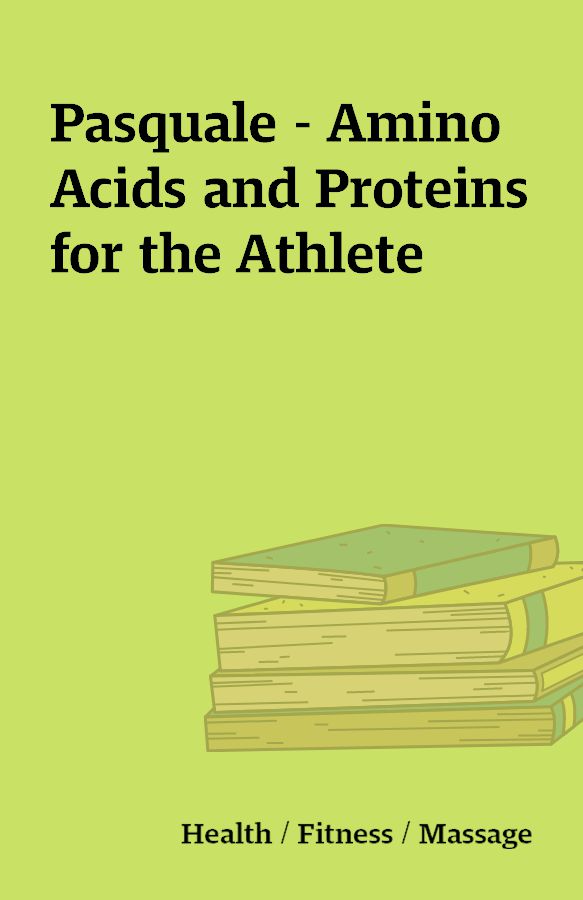
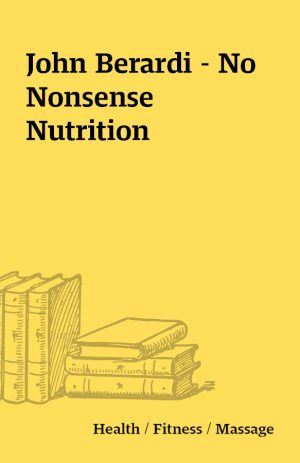
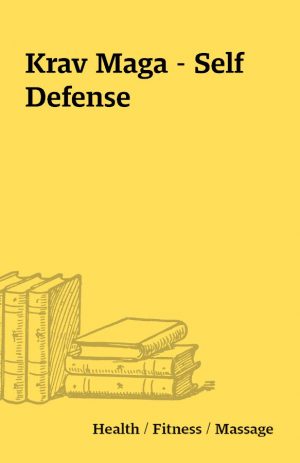
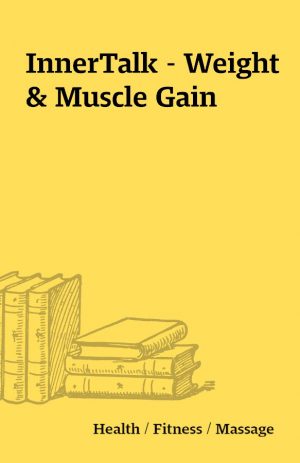
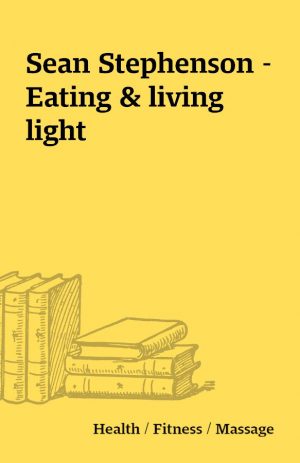
Reviews
There are no reviews yet.